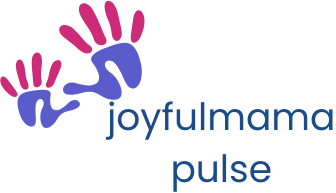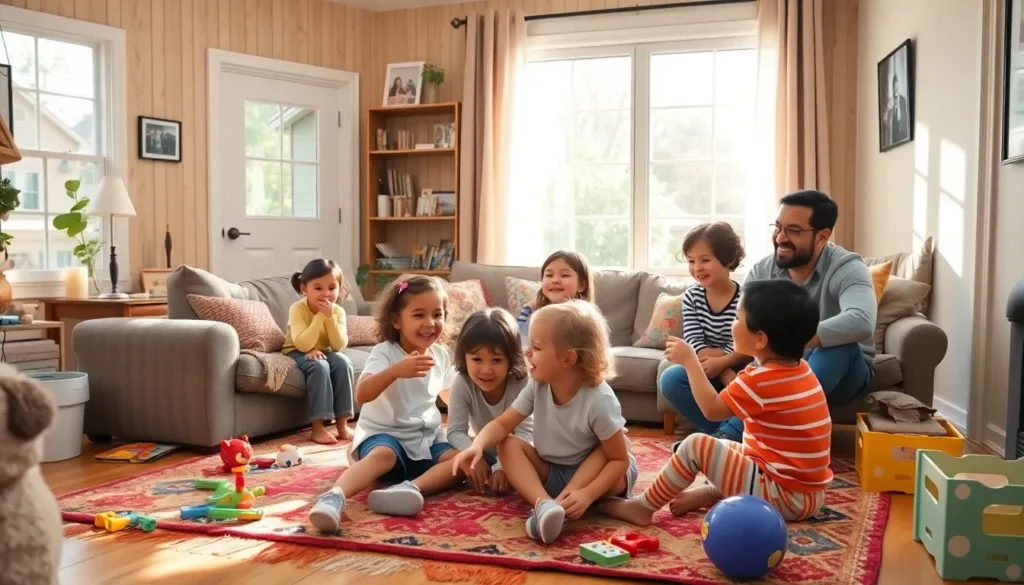Table of Contents
ToggleAdoption and fostering aren’t just acts of kindness; they’re life-changing adventures that come with their own set of challenges and rewards. Imagine opening your home to a child who’s waiting for a loving family, and in turn, discovering a world filled with laughter, chaos, and maybe a few too many art projects. Who knew that a simple act of love could lead to such a whirlwind of emotions and unforgettable memories?
Whether it’s the thrill of bedtime stories or the occasional battle over broccoli, fostering or adopting offers a unique opportunity to create a bond that lasts a lifetime. It’s not just about giving a child a home; it’s about building a family, one quirky moment at a time. So if you’re ready to trade in your quiet evenings for spontaneous dance parties and heartfelt conversations, this journey might just be the perfect fit.
Understanding Adoption and Fostering
Adoption and fostering represent two distinct paths to nurturing children in need. Each method influences family dynamics and child development in unique ways.
Key Differences Between Adoption and Fostering
Adoption creates a permanent family bond between the child and their adoptive parents. Legal parental rights are transferred to the adoptive parents. Fostering, on the other hand, provides temporary care for children, often in crisis situations. Foster parents maintain no legal rights to the child. Adoption typically requires a commitment to raising the child until adulthood. Fostering can involve short-term arrangements, often aimed at reunification with biological families. Understanding these differences helps prospective caregivers choose the right path.
Common Misconceptions
Many believe adoption guarantees a perfect family experience, but challenges still exist. Parents may face behavioral or emotional issues as children adjust. Some think fostering is solely about providing a safe space, ignoring the emotional investment needed. Each child requires time to build trust and develop relationships. Others assume biological parents abandon their children, not realizing that many are involved in reunification efforts. Misunderstandings like these can skew perceptions and impact decision-making around fostering or adoption.
The Process of Adoption

Navigating through the process of adoption involves several important steps and careful preparation to ensure a successful experience for all involved.
Preparing for Adoption
Preparation begins with research into different types of adoption, including domestic, international, and foster adoption. Prospective parents assess their personal situations, including financial stability and emotional readiness, to determine the best path forward. Attending informational sessions offered by agencies provides valuable insights, as does reaching out to individuals who have undergone the adoption process. Developing a support network through family and friends also plays a critical role in easing the transition. Gathering necessary documents such as background checks, financial statements, and medical records ensures readiness for the next steps.
The Legal Steps Involved
Legal steps encompass several critical processes that finalize the adoption. First, filing an adoption petition with the court establishes formal intent. Completing a home study, which evaluates the living environment, follows this step. Social workers assess the family’s suitability, including interviews and home visits. Consent from biological parents, if applicable, must occur before proceeding. After approval from the social worker and court, the finalization hearing occurs, leading to the legal adoption decree. This decree grants the adoptive parents all rights and responsibilities of legal guardianship. Adoption can vary in length and complexity based on individual circumstances and the type of adoption pursued.
The Process of Fostering
Fostering involves welcoming children into one’s home temporarily. It is a vital step towards providing a safe environment while working towards family reunification.
Types of Fostering
Fostering arrangements vary. Traditional fostering focuses on temporary care for children unable to remain with their families. Emergency fostering addresses immediate placement needs in crisis situations. Respite fostering offers short breaks for full-time foster parents. Specialized fostering caters to children with specific needs, such as behavioral challenges or disabilities. All types require flexibility and commitment from foster parents.
Requirements for Foster Parents
Foster parents must meet specific criteria. Age requirements typically start at 21 years, ensuring maturity and stability. Background checks on criminal history are mandatory for safety. Home inspections assess suitability for children, focusing on space and safety features. Training courses prepare parents for the unique challenges of fostering. Support from social services remains a critical asset throughout the journey.
Benefits of Adoption or Fostering
Adoption and fostering offer profound benefits for both children and families, creating enriching environments for growth and connection. These pathways provide vital support to those in need while enhancing the lives of caregivers.
Impact on Children
Children who experience adoption or fostering often thrive in nurturing settings. Stability becomes a key factor as children form secure attachments with caregivers. Emotional development improves through consistent care and support. Children exposed to love and attention frequently show enhanced self-esteem. They gain access to educational opportunities and resources that may not have been available otherwise. A sense of belonging fosters resilience, allowing them to cope with past trauma.
Advantages for Families
Families adopting or fostering children experience unique advantages that can deeply enrich their lives. Stronger family bonds form through shared experiences and challenges. Personal growth occurs as caregivers develop empathy, patience, and understanding. Families also obtain a greater appreciation for diverse backgrounds and experiences. New connections with other caregivers can result from participating in support groups and community events. Financial support may be available for families, easing some of the burdens associated with raising children. Ultimately, this journey fosters a fulfilling family life characterized by love and adventure.
Challenges of Adoption or Fostering
Adoption and fostering involve various challenges that require careful consideration and preparation. Emotional and psychological aspects play a significant role in navigating these journeys.
Emotional and Psychological Considerations
Adopting or fostering often sparks a range of emotional responses. Children may experience trauma, grief, or attachment issues stemming from prior experiences. Individuals choosing to foster or adopt also face emotional adjustments. They might encounter joy in forming connections alongside the pain of separation or behavioral challenges from the child. It’s essential for caregivers to engage in self-care to manage stress and maintain emotional well-being. Seeking support from therapists or support groups can help address these issues and create a healthier family environment.
Navigating the System
Navigating the adoption or fostering system can feel overwhelming. A multitude of regulations and procedures exists that vary by state and type of adoption. Individuals can find themselves navigating complex paperwork, background checks, and home studies as part of the approval process. Understanding these requirements is crucial for success. Social workers play an important role, offering guidance throughout the journey and connecting families to necessary resources. Preparing thoroughly and maintaining open communication with caseworkers can streamline the experience and foster a more supportive environment for children.
Adoption and fostering offer unique opportunities to create meaningful connections and enrich lives. Both paths require dedication and emotional investment but can lead to profound rewards for families and children alike. By understanding the differences between adoption and fostering prospective parents can make informed decisions that align with their values and circumstances.
The journey might be filled with challenges but it’s also one of immense growth and joy. Embracing the chaos and beauty of these experiences can lead to a vibrant family life, filled with love and unforgettable memories. For those considering this journey it’s a chance to make a lasting difference in a child’s life while transforming their own.





